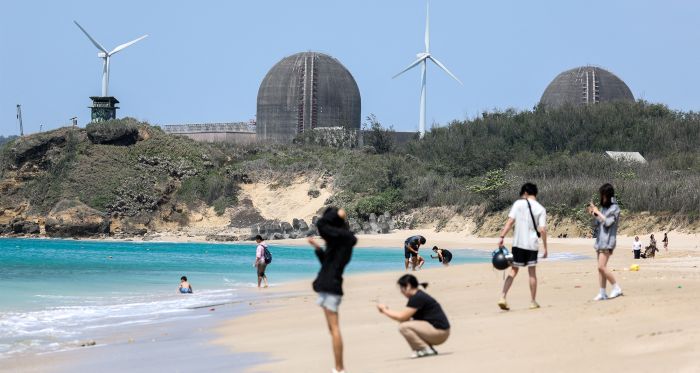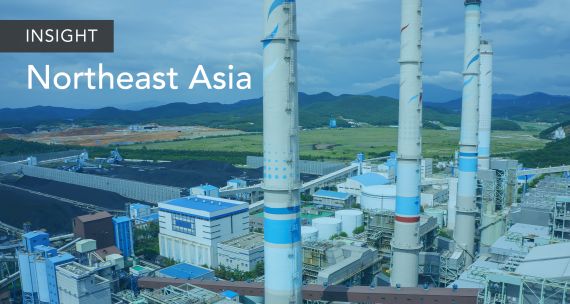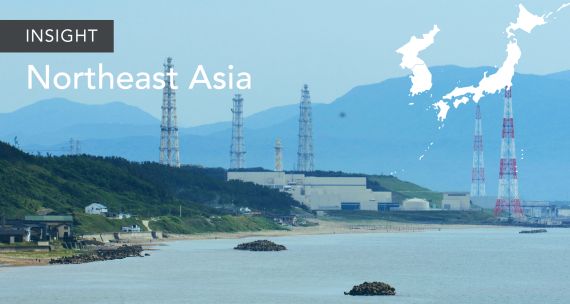The Takeaway
An August 23 referendum on restarting Taiwan’s Third Nuclear Power Plant failed to pass, bringing the island’s energy security concerns back into focus. As Taiwan strives to be a global hub for tech manufacturing, reliable energy supplies are vital to maintaining its edge in chipmaking and artificial intelligence (AI). In addition, the more than four million votes cast in favour of restarting the plant highlight public anxiety over Taiwan’s energy vulnerability — anxiety that could push leaders to revisit the island’s nuclear-free policy or risk losing votes in the 2028 presidential election.
Canada, already a major player in Taiwan’s offshore wind sector, could bring its nuclear expertise to bear in strengthening the island’s energy security, if Taipei were to revive atomic power.
In Brief
- In May, the opposition Kuomintang and Taiwan People’s Party, which together hold a legislative majority, backed a referendum to restart Taiwan’s third nuclear power plant, arguing that the island could reduce dependence on imported fuel and ensure its own energy supply.
- The Maanshan Nuclear Power Plant, located on the island’s southern tip, was taken offline the same month as part of the ruling Democratic Progressive Party’s (DPP) pledge to phase out all of Taiwan’s nuclear power programs, which once met more than half of the island’s energy needs. Taiwan originally had three nuclear plants, which were shut between 2014 and 2025. Maanshan was the final plant to close.
- Roughly 4.3 million Taiwanese voted in favour of reopening the plant, vastly outnumbering the 1.5 million who voted against it. However, under referendum rules, a motion must secure the support of at least one quarter of Taiwan’s 20 million registered voters — around five million — to pass. By law, the same issue cannot be brought to a referendum again for another two years.
- In response to the plebiscite, President Lai Ching-te left the door open to Taiwan reconsidering nuclear technology in the future if safety conditions are met.
Implications
Taiwan’s energy depends on imports, while renewables lag. The island imports more than 95 per cent of its energy. In 2024, liquefied natural gas (LNG) was the leading source of power generation, at over 40 per cent, while renewables accounted for only 13 per cent — well short of the government’s 20 per cent target. Power outages have become increasingly frequent.
Taiwan’s energy crunch could undermine its advanced technology leadership. The Taiwan Semiconductor Manufacturing Company (TSMC), which produces 90 per cent of the world’s most advanced chips for clients such as Apple and Nvidia, uses nine per cent of Taiwan’s total electricity output. That share is set to expand. In 2021, a seven-hour blackout at TSMC’s Tainan plant directly disrupted production of TSMC’s 40-nanometre chip production. With an AI boom estimated to drive a 12-13 per cent increase in power demand by 2030, such energy shortages will continue to be a serious risk not only to the viability of Taiwan’s long-term tech leadership, but also to the global supply of advanced chips amid surging AI demand.
For Taiwan, energy security is also a chokepoint security issue. If Beijing were to launch a blockade of Taiwan, the island's limited reserves of natural gas and its reliance on imported energy would be critical vulnerabilities. Chinese military drills have already simulated blockades of Taiwan’s LNG gateways, with estimates suggesting that the island’s LNG supplies could be depleted within 10 days. Analysts warn China could also target Taiwan’s power grid, mirroring tactics Russia has employed in Ukraine.
However, restarting the Maanshan Plant runs the risk of a Fukushima-like leak. Such an incident would have severe environmental consequences for the earthquake-prone region where the Maanshan plant is located. However, the high number of the referendum’s voters who were in favour of the plant’s reopening seems to indicate a shift in public opinion: a similar referendum in 2021 to restart the construction of two mothballed reactors at Lungmen faced 51 per cent opposition versus 47 per cent support. While the same proposal will not return for at least another two years, public anxiety could mean that the debate about nuclear energy remains active.
What’s Next
1. Nuclear remains difficult question for DPP
This failed — yet majority-backed — referendum underscores pressure on the Lai government to revisit the DPP’s ideological commitment to a “nuclear-free homeland.” If the DPP does not address the island’s lagging renewable development — and the public’s mounting concerns over a stable energy supply — the party’s support could take a hit in the 2028 presidential election.
2. Deepening Canada–Taiwan energy partnerships
Canada has emerged as a promising partner in Taiwan’s energy diversification, with Canadian investment in the island’s offshore wind projects having the potential to power over one million households. As Canada exports its first shipment of LNG in July to Asian markets, Taiwan is eyeing opportunities for collaboration, both in terms of investment and imports. Meanwhile, should Taiwan revisit its stance on nuclear power, Canada could contribute its full spectrum of capabilities, from fuel production to advanced reactor technologies, including the G7’s first small modular reactor with enhanced safety features. The Canadian Trade Gateway for Nuclear Development, announced as part of Ottawa’s 2022 Indo-Pacific Strategy, signals Canada’s commitment to sharing expertise and best practices in nuclear technology to help partners meet their clean energy needs.
• Edited by Vina Nadjibulla, Vice-President Research & Strategy, Erin Williams, Programs Director, and Ted Fraser, Senior Editor, APF Canada






